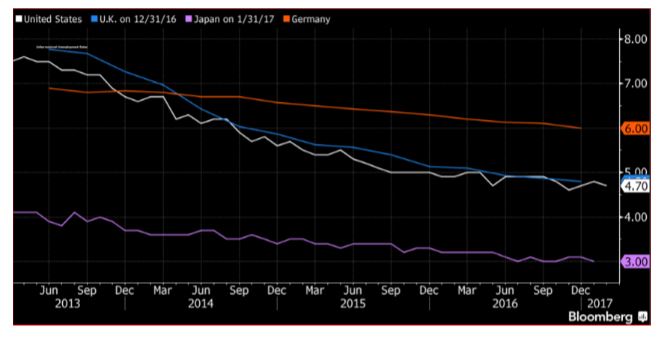The February jobs report gives us another snapshot of how the income for American worker is undergoing change. Continuing a recent trend, average hourly earnings rose a modest 0.2 per cent and weekly hours worked remained unchanged for last month.The modest increase in wage income, at a time when the country is very close to or at full employment, is a major cause for concern (see Figure 1). If an accommodating monetary policy that generates full employment will not boost wages, then what will?
This sense of wage frustration is widely shared in the advanced economies. In the United Kingdom wage growth has slowed at a time when a devaluing pound is reducing real wage income. The ECB President Mario Draghi calls wage growth ”the linchpin of a self-sustained increase in inflation” and he is totally focussed on that variable in setting monetary policy. Japan, while experiencing the lowest unemployment rate of any advanced nation (3 per cent), has experienced no wage pressures for many years.As a recent Bloomberg article put it, ”it is a good time to find a job in these countries, but do not expect a big raise”[1]
Figure 1 Unemployment Rates in U.S., U.K., Japan and Germany

Relative Income Shares
Any student studying relative income shares during the latter part of the 20th century has accepted as gospel that the share of national output accruing to workers as compensation was relatively constant. The idea had become so engrained that it was accepted wisdom in the economic profession. However, its decline during the early years in the 21st century has drawn a lot of attention for both economic and political reasons. Something fundamentally has changed for the American worker, not necessarily for the better.
A recent study by the U.S. Bureau of Statistics (BLS) examines this question in considerable detail.[2] The study documents 1)labor share of national income and 2) labor share vis a vis profits within different industries. Figure 2 shows that the labor share had a steady decline from a ratio of 65 per cent in 2002 to 58 per cent in 2016. Not only was the decline dramatic, but it was particularly swift in the past decade.













Leave A Comment